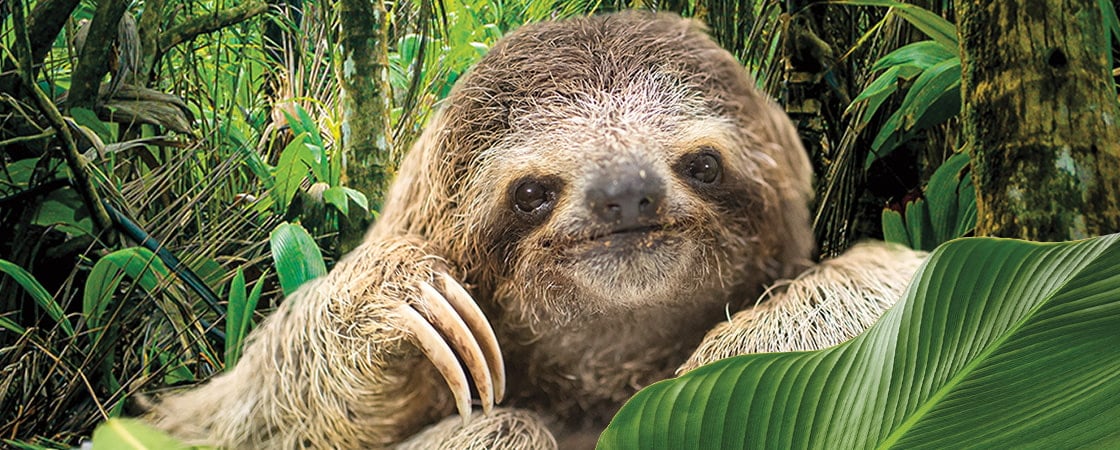Snow White lay still on the forest floor. The tiny sloth was ice-cold. Her breathing was weak.
She was all alone—and dangerously close to death.
Only months before, Snow White had been healthy and happy. She held tightly to her mother in the leafy treetops of Costa Rica. Sloths and other animals make their home in the rainforest there.
As Snow White snuggled with her mother, orange monkeys leapt from tree to tree. Toucans with bright-yellow beaks perched in the branches. Iguanas the size of small dogs marched below.
When Snow White was about 6 months old, she began to live on her own. She spent her days in a small area, eating fruit and leaves from a few trees.
Then disaster struck.
At some point, one of the trees Snow White needed for food was likely cut down. Without enough to eat, she began to starve. She grew thinner and thinner. Then a big storm hit the area. Too weak to hang on, she likely fell from a tree.
Would Snow White survive?
Snow White lay on the forest floor. The tiny sloth was very cold. Her breathing was weak.
She was all alone. And she was dangerously close to death.
Only months before, Snow White had been healthy and happy. She lived in the leafy treetops of Costa Rica. Sloths and other animals make their home in the rainforest there.
Snow White snuggled with her mother as orange monkeys jumped from tree to tree. Toucans with bright-yellow beaks sat in the branches. Iguanas the size of small dogs walked below.
When Snow White was about 6 months old, she began to live on her own. She spent her days in a small area. She ate fruit and leaves from a few trees.
Then a disaster happened.
At some point, a tree was likely cut down. Snow White needed that tree for food. She didn't have enough to eat and began to starve. She grew thinner and thinner. Then a big storm hit the area. Too weak to hang on, she likely fell from a tree.
Would Snow White survive?
A tiny sloth named Snow White lay alone on the ground. She was close to death.
Months earlier Snow White had lived with her mother. They lived in the rainforest in Costa Rica. When Snow White was about 6 months old, she started to live alone. But then something horrible happened.
A tree was likely cut down. Snow White needed that tree for food. She began to starve.
Then a big storm came. Snow White couldn’t hold on to her tree. She likely fell. Would Snow White survive?

